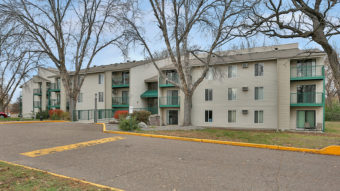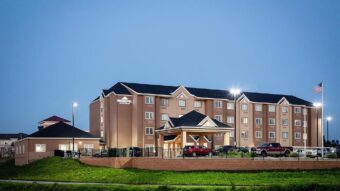Guest post by Tim Thompson, HSA Commercial Real Estate
Initiating a speculative development is not for those afraid of taking risks. The margin for error for these types of projects is often razor thin, but when an experienced development firm has the timing, location and market knowledge precisely right, spec development has the unique potential to deliver ample rewards.
In April, HSA Commercial put this theory to the test as it broke ground on an 180,480-square-foot industrial speculative facility at Park 355 in Woodridge, Ill. The new multi-tenant office / warehouse project is one of the first speculative developments to come out of the ground in the I-55 corridor since the downturn and will hopefully be in a leading position to capture the growth in manufacturing and logistics business as the economic recovery takes hold.
HSA has owned the land at Park 355 for almost 10 years and built a separate spec project there in 2006, but only recently did the company feel it was the right time and the right market conditions to deliver a new class-A facility as part of the project’s second phase. Many in the industry may scratch their heads and wonder what specific factors contributed to the decision to break ground now on this or any other spec project, and our team has considered the topic at length to identify the four key ingredients for a successful spec development.
Positive market knowledge
Through the company’s development and leasing experience, HSA has established a strong understanding of the south and southwest I-55 submarket in the Chicago area. Having worked in the market since 1992, I have personally been involved in countless transactions in the I-55 corridor, and HSA and its partners have developed more than 5 million square feet there as well. In recent years, HSA and its associates have leased up the nearby Maple Point Business Park and the first phase of Park 355 with tenants such as Ace Hardware, Tricor Braun and Nestle Water.
These properties and others in the area have received consistent rent growth, and tenants have renewed at a steady pace, lending credence to the idea that a lack of available space existed in this submarket for new entrants or tenants in need of expansion.
Based on Q1 2013 data provided by CoStar Group, the south I-55 corridor has one of the lowest vacancy rates at 6.9 percent and was among the highest submarkets in net absorption throughout the Chicago area. Yet, with all of this positive leasing activity, through the first quarter of this year there was no new construction to address the continuous demand. The combination of those key market indicators suggested inefficiency in the market that would soon lead to a lack of supply.
By monitoring the trends closely and having them validated through our experience in the area, we were confident that we could deliver and lease new product for a specific user group.
Identifying the target customer
Those that understand real estate will know that it’s far too risky to base investment decisions on raw market data or economic forecasts. Developers need to completely dissect the market to observe the various customer segments and understand their behaviors.
Through HSA’s analysis, we observed that while big blocks of space or large-scale build-to-suit projects sat idle in this area, there was strong pent-up demand from users in the 20,000-square-foot range. To accommodate and attract these prospective tenants, HSA decided to build a targeted development that would be more adaptable to several, smaller users rather than one large tenant. With a lack of available space for this specific tenant group, especially new, class-A space, it made sense to offer a property that meets this unique demand.
Unique location
In real estate, projects either sink or swim based on their location, and that’s why ensuring our development was in the right location was critical to our decision to build. The core of any real estate is always the same old adage: location, location, location. When dealing with a speculative development, it is of even more importance.
Park 355 is strategically located close to the I-355 and I-55 junction in an eastward position that allows for unfettered access and for avoiding traffic congestion. The recent 355 extension now allows for a quick connection to I-80, which is only a short drive from the property. From Park 355, tenants can literally access major highways that take them north, south, east and west, offering direct entry to several different regions of the country which is of critical value to distributors.
Solid partners
Lastly, in today’s market, it is essential to have solid partners when embarking on a speculative venture.
HSA was fortunate to find the right partner with Denver-based Industrial Income Trust. Our firms have collaborated previously on the sale and management of a portfolio of class-A industrial real estate assets and have a track record of success together. By relying on the combined knowledge and resources of our companies, embarking on the second phase of Park 355 was made possible. In many of cases such as this, collaboration often allows firms to leverage the strengths of their partners while mitigating the risks of a large-scale project.
It takes confidence to be the first firm in years to launch a speculative development for a particular submarket, but with the right partners, location and market research, the circumstances can often be compelling enough to justify the risk. The window of opportunity for spec projects is often small, but the view from the other side can be spectacular.
Tim Thompson is executive vice president and managing director of HSA Commercial Real Estate’s Industrial Brokerage Division. In the last 10 years, he has played a role in HSA’s development of more than 5 million square feet of new industrial product in the Chicago metropolitan area, identifying development sites and overseeing the leasing teams that market the finished product.



